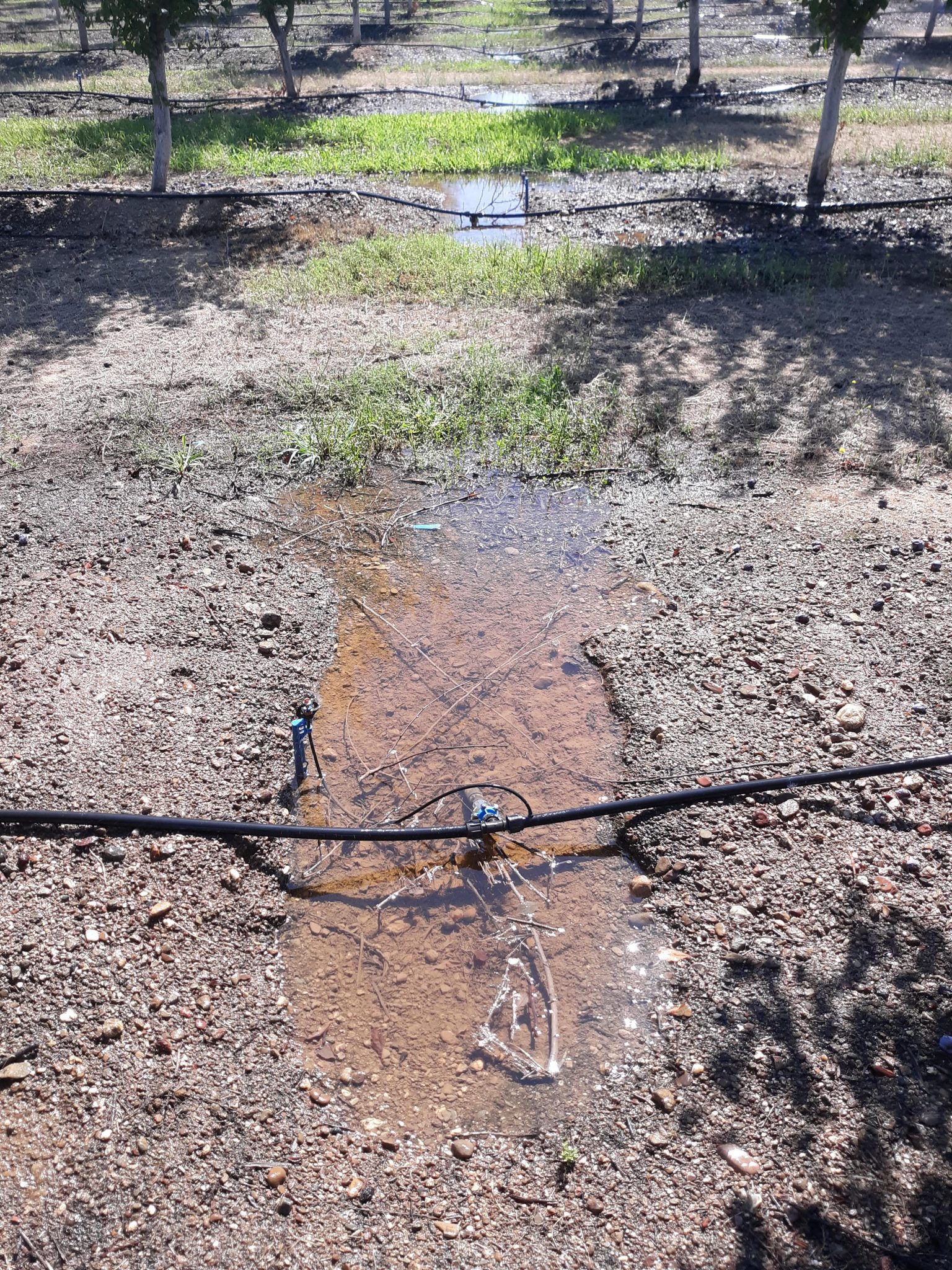
A single bad gasket in a filter, releasing just a drop at a time, can waste thousands of gallons of water over an irrigation season.
Tom Devol, senior manager for field outreach and education for Almond Board of California, said those small leaks are often overlooked but can play a big role in water use efficiency.
Gains in irrigation efficiency are offset when leaks in the system are not addressed. Maintenance of the systems is key, Devol said.
Tehama County Resource Conservation District’s Mobile Irrigation Lab manager Kevin Greer notes that punctures in irrigation hoses caused by vertebrate pests tend to get more attention, but there are other areas where leaks can cause excessive water loss.
He finds that inlet tees where hoses connect are a major source of water loss as connections deteriorate. These potential leak sites are subject to a lot of movement as hoses are pushed and pulled or impacted by harvest equipment. Another common source of water loss is found at the pumping stations where water reaches the valves. Greer said leaking is compounded where systems have older stainless steel and the gaskets go bad. What looks like a small leak can become a large loss with longer and more run times, Greer said.
While orchard managers or growers work to maintain their pumping systems, there are more vulnerable areas that are often a constant source of leaks. Orchards that border open fields or waterways can have constant problems with animals chewing and damaging irrigation hoses.
“They will have to do something different to prevent that,” Greer said. “Burying lines, changing the infrastructure, they just do not have time to do a thorough job. Labor costs add up, and the area will have constant leaks.”
Greer, who evaluates 80 to 100 irrigation systems in the Sacramento Valley each year, said microirrigation systems, depending on location, will need constant maintenance. Irrigation crews will notice and make repairs on the big leaks but can miss or underestimate the source of smaller leaks until they become bigger.

Almond Board of California’s Irrigation System Maintenance Checklist at the pump suggests:
• Check pump flow rate and pressure
• Repair leaks at pump station
• Service pumps and oilers
• Service pump electrical panel
• Review and verify filter controller flush times
• Service filters for leaks and media condition
In the field:
• Flush main and sub mains
• Flush irrigation laterals and hoses
• Service air vents
• Repair leaking riser tees
• Spot check irrigation line pressures
• Replace broken or worn sprinkler nozzles and spaghetti hose











